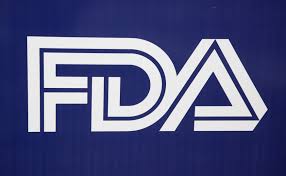Last year this at time many were discussing and commenting on the proposed Produce Safety Rule published by FDA. There were so many comments about parts of the rule that the FDA published a supplement in September 2014. The comment period on the supplement is open until Dec. 15. This article briefly summarizes parts of the revised proposal that address manure applications and water.
The initial proposal required a waiting period of 9 months between application of raw manure and harvest of a crop covered under the rule. (The rule covers fresh fruit and vegetable crops normally eaten raw.) The new proposal does not define any specific waiting period. The FDA explains that this change was made because the length of time necessary to reduce the risk will vary depending on many factors, and we don’t yet have the scientific understanding to develop a rule that takes into account all those factors. The FDA will conduct a risk assessment and work with USDA and others to do research so that in the future, when a required waiting period is defined, it will be based on more complete information. This change also applies to other soil amendments from animal sources that are not treated.
If this part of the rule applies to you, stay tuned for opportunities to provide input on research that will address your production system. And recognize that even though no waiting period is specified, you are still responsible for using raw manure in a way that prevents presence of human pathogens on produce that goes to market.
For properly composted manure and other animal products, the initial proposal required a waiting period of 45 days between application and harvest. The new proposal does not require any waiting period.
The initial proposal required that if water used for irrigation or sprays would contact the edible portion of the crop, the source must be tested for E. coli on a regular basis. If the level of E. coli exceeded EPA recreational water quality criteria (more than 126 CFU/100 ml), the water could not be used unless it were treated. The revised proposal allows use of water that has doesn’t meet the EPA criteria, if there is enough time between application and harvest to allow pathogens to die off. How much time is ‘enough’ is calculated by allowing for 68% (0.5 log) reduction in the E coli count for each day between irrigation and harvest. So, if the E. coli level in a pond were 1000 CFU/100 ml, the water would not be suitable for irrigation on the day of harvest. However if there were two days between irrigation and harvest, the count would be reduced by 68% the first day (to 316), and another 68% the second day, to 100. This is below the EPA limit, and so the water could be used for irrigation two days before harvest. In addition, if postharvest activities such as washing and storage are expected to reduce pathogen numbers, that could be taken into account, with supporting data.
The revised proposal also changes the water testing requirements, reducing the amount of testing based on results of baseline tests.
For additional information visit the FDA site http://www.fda.gov/Food/GuidanceRegulation/FSMA/ucm334114.htm. Feel free to contact me with questions.
